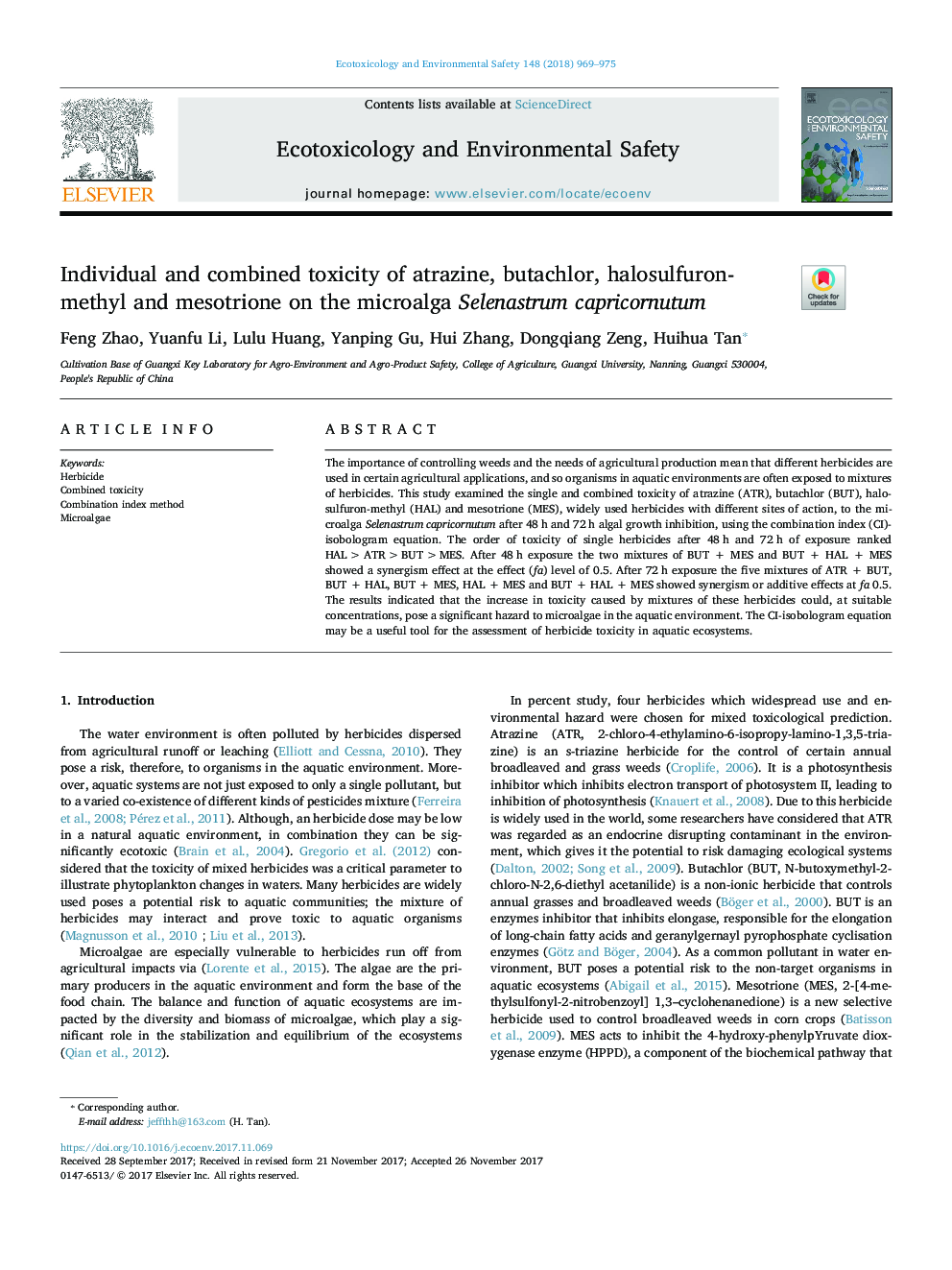| Article ID | Journal | Published Year | Pages | File Type |
|---|---|---|---|---|
| 8854652 | Ecotoxicology and Environmental Safety | 2018 | 7 Pages |
Abstract
The importance of controlling weeds and the needs of agricultural production mean that different herbicides are used in certain agricultural applications, and so organisms in aquatic environments are often exposed to mixtures of herbicides. This study examined the single and combined toxicity of atrazine (ATR), butachlor (BUT), halosulfuron-methyl (HAL) and mesotrione (MES), widely used herbicides with different sites of action, to the microalga Selenastrum capricornutum after 48Â h and 72Â h algal growth inhibition, using the combination index (CI)-isobologram equation. The order of toxicity of single herbicides after 48Â h and 72Â h of exposure ranked HAL > ATR > BUT > MES. After 48Â h exposure the two mixtures of BUT + MES and BUT + HAL + MES showed a synergism effect at the effect (fa) level of 0.5. After 72Â h exposure the five mixtures of ATR + BUT, BUT + HAL, BUT + MES, HAL + MES and BUT + HAL + MES showed synergism or additive effects at fa 0.5. The results indicated that the increase in toxicity caused by mixtures of these herbicides could, at suitable concentrations, pose a significant hazard to microalgae in the aquatic environment. The CI-isobologram equation may be a useful tool for the assessment of herbicide toxicity in aquatic ecosystems.
Keywords
Related Topics
Life Sciences
Environmental Science
Environmental Chemistry
Authors
Feng Zhao, Yuanfu Li, Lulu Huang, Yanping Gu, Hui Zhang, Dongqiang Zeng, Huihua Tan,
